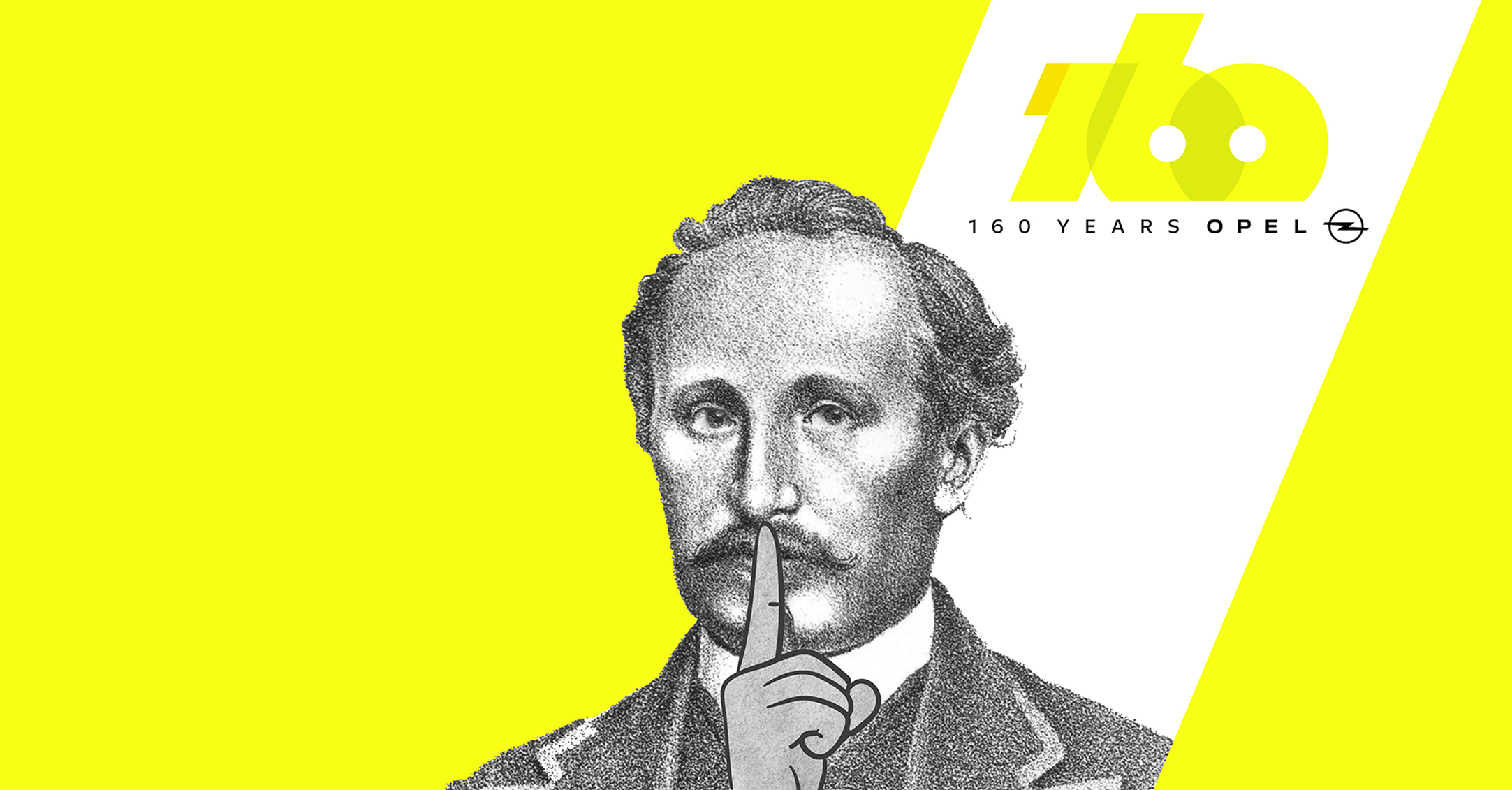From sewing machines to bicycles to automobiles – the Opel history is rich in treasures. But there are also some products “Made in Rüsselsheim” that have been forgotten. To mark the company’s 160th birthday, we’ve tracked down a dozen “OPEL SECRETS” in the archive.

01 The frosty bestseller
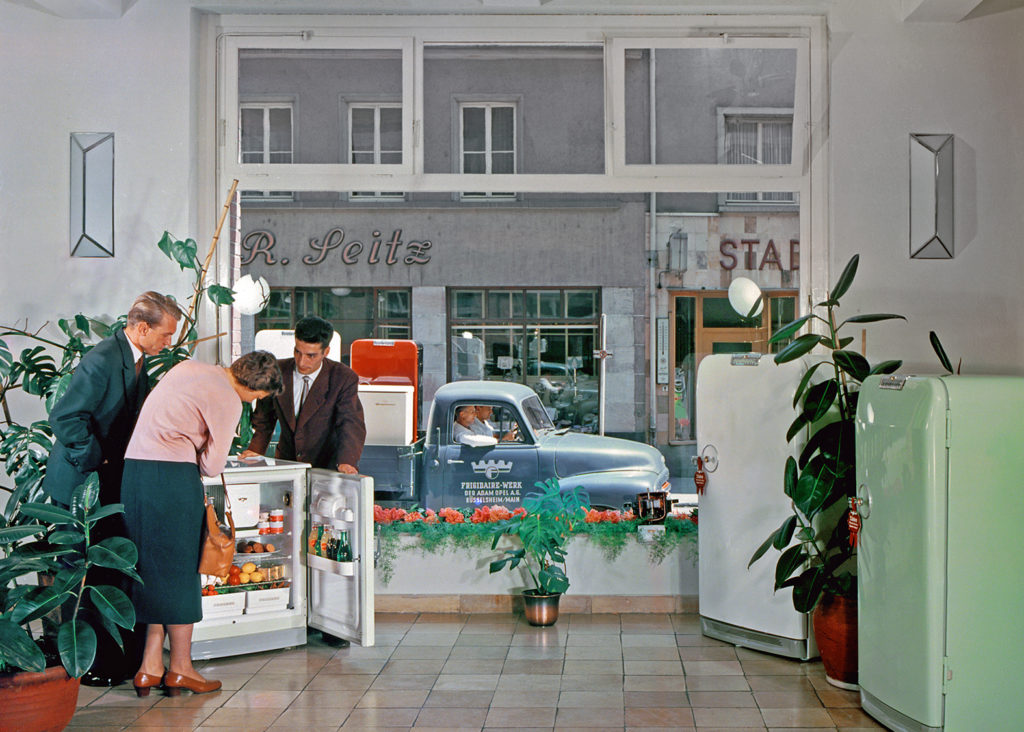
The refrigerator is the dream of many German housewives in the 50s. One of the most coveted models is the “Frigidaire” – and this brand has a common history with Opel. Thousands of refrigerators were manufactured in Rüsselsheim. How did it come about? Frigidaire had been building refrigerators since 1916, and in 1918 the company was bought by General Motors. From the mid-1920s, business boomed, with demand soaring worldwide. And so the GM subsidiary Frigidaire also expanded into Germany. In 1926, Frigidaire GmbH was founded in Berlin, and from 1931 Opel supplied components from Rüsselsheim for the Berlin assembly line. On October 1, 1938, the Rüsselsheim main plant finally took over complete assembly of the units. From 1949, the refrigerators produced in Hesse carry the words “Product of Adam Opel AG” in their logo. After a design relaunch in 1954, the brand even advanced to become the market leader in West Germany. From the mid-1950s, however, Opel wanted to concentrate on booming automobile production – and so the decision was made to discontinue Frigidaire production in 1959. After that, refrigerators for the European market only came from the Hendon/London and Gennevilliers/Paris plants. Incidentally, Frigidaire still exists today, but the brand now belongs to a Swedish company.

02 The giant for the field
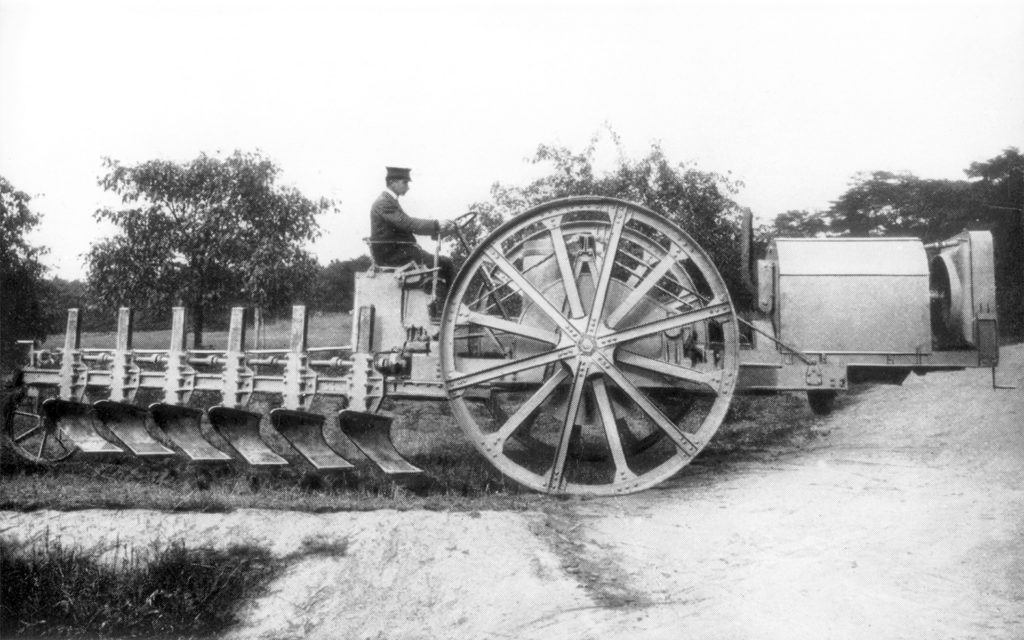
Huge steel wheels, a massive engine in front of them, and a metal skeleton jutting out behind them – what the heck is that? A motorized plow! Opel presented this monumental agricultural machine in 1911. At its heart was a newly developed 60-horsepower engine with a ten-liter engine displacement. The power unit was located in front of the wheels to provide a counterweight for the driver and the six plowshares behind it. With this colossus, Opel wants to offer farmers an alternative to the steam plow. This is because the motorized plow can be operated by just one person. The product description promises “to be able to plow ten to twelve hectares a day on medium-heavy soil.” That would have been a huge labor-saver for the farmer. Would have been. Because as it turned out, the arable land in the Rhine-Main region was too small to use the device sensibly. Production was put on hold, then World War I broke out and the project was not pursued. What remains is the historical distinction that Opel was one of the first companies in the motor vehicle industry to develop an agricultural vehicle.

03 Into the sky
In addition to the motorised plough, the year 1911 holds another premiere in store – the Opel aircraft engine. The demands on aircraft engines in terms of reliability, smoothness and performance had increased enormously around 1910. A challenge that the engine builders in Rüsselsheim were happy to accept. The 65 hp water-cooled Opel four-cylinder is extremely light at around 130 kilogrammes. The basic technical design was based on the engines of the large Opel motorcars of the time. The new engine made its first major appearance at Darmstadt airport. The maiden flight of an Opel engine, carried out by the aviation pioneer August Euler in a biplane, was attended not only by the 71-year-old Sophie Opel and her five sons, but also by Prince Heinrich of Prussia and Grand Duke Ernst Ludwig of Hesse. Six-cylinder aircraft engines are also later manufactured by Opel. However, these were produced under licence during the First World War. The Argus (Type As III O) and BMW (Type IIIa O) designs reveal their Rüsselsheim origins by the suffixed letter “O”. Shortly before the end of the war, the Opel specialists designed a nine-cylinder aircraft engine with 200 hp, which was still being tested but never left the factory.
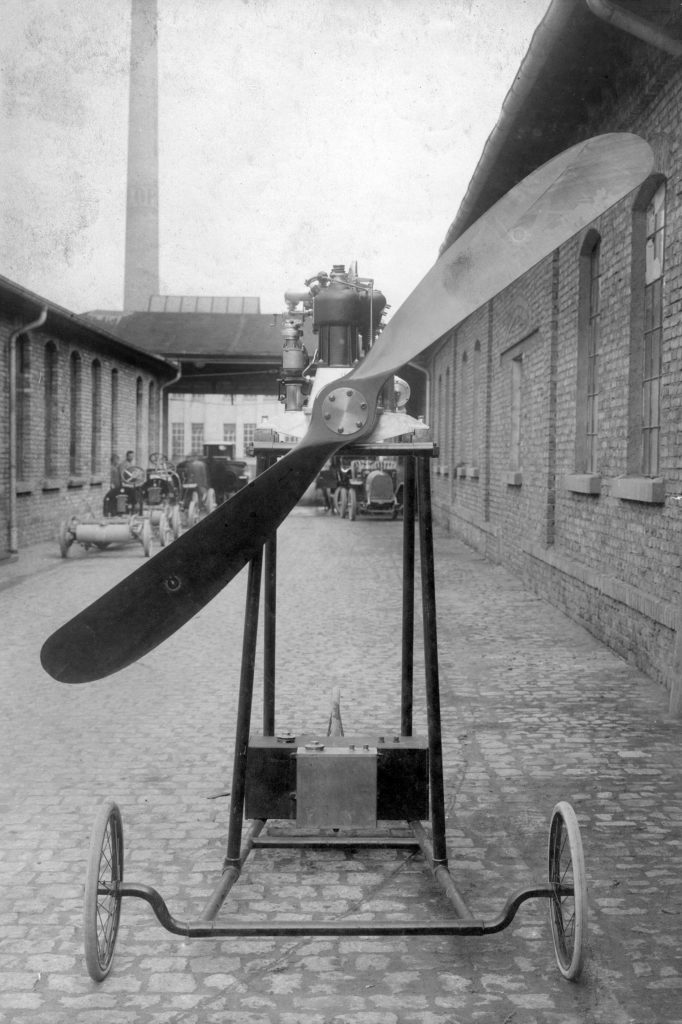

04 What winemakers want
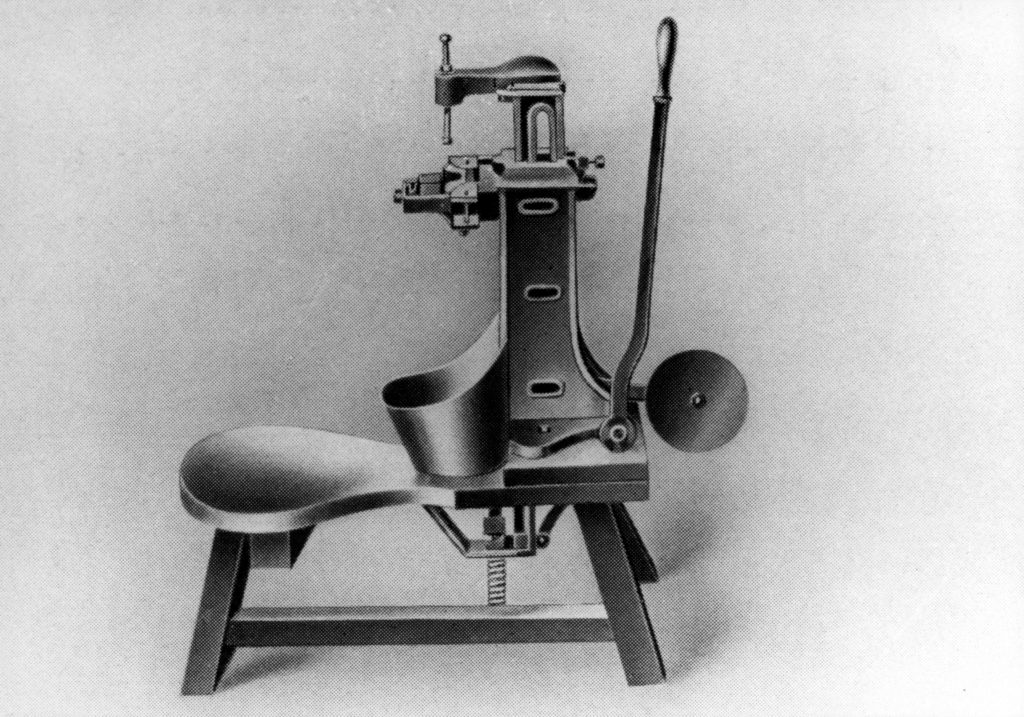
It is no secret that company founder Adam Opel began manufacturing sewing machines in 1862 and that it was not until four years after his death that his wife Sophie and his sons started building automobiles. But few people know that Opel also produced winery machines for ten years from 1885 and was very successful on the German market with them. At the suggestion of winegrowers in the neighbourhood, Adam Opel had included „capsuleers“, i.e. cork machines, in his manufacturing programme and thus became the first German supplier of such products. Despite the good demand, however, a problem soon became apparent: cork machines were a seasonal business. The sewing machines and bicycles that the company had been producing since 1887, on the other hand, kept the production facilities busy all year round. And so, after Adam Opel’s death in 1895, the sons sold the entire production of cellar machines to the Opel employees Blöcher and Lorenz. They went into business for themselves and continued to profit from the good reputation of the “Opel cork machines” for a long time.

05 Motor meets two-wheeler
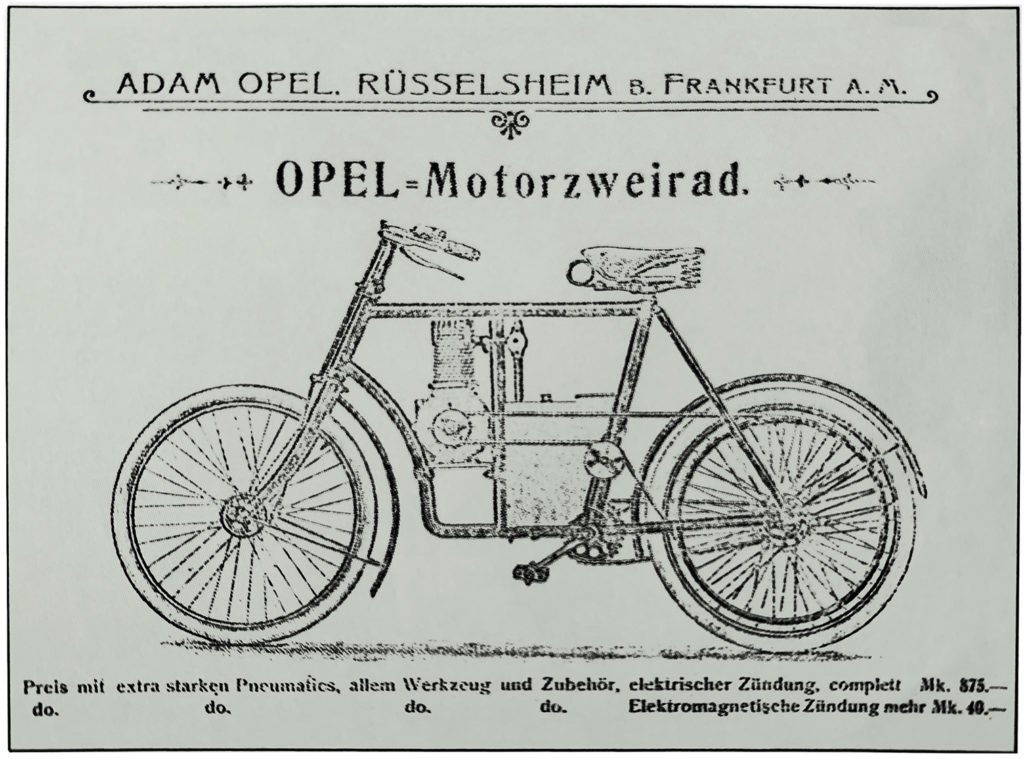
In 1901, Opel called its first motorbike “Motorzweirad” (motorised two-wheeler) – the narrow, long-legged vehicle can hardly deny its descent from the bicycle. But the premiere model already showed the design that was to become established in the following years – the engine was inserted into the frame, the rear wheel driven by a belt. With an engine output of 1 ¾ hp, the vehicle could travel at speeds of up to 40 km/h. It was a success on the market – further models followed. The last Opel motorbike was the Motoclub 500, which was offered from 1928 to 1930. Although modern prototypes were being tested, the new main shareholder General Motors pushed for the discontinuation of this Opel production branch in 1930.

06 Pioneering lifting height
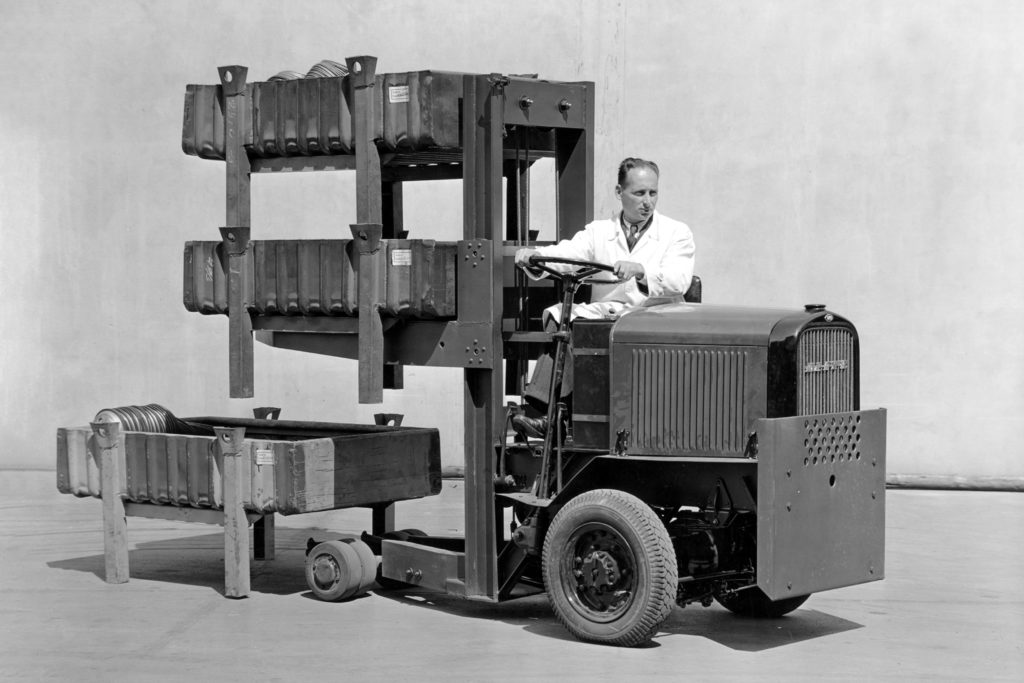
On the initiative of Heinrich Müller, then master of the transport department in Rüsselsheim, Opel developed a lifting transporter in 1936. It was also available on the open market for 3,750 Reichsmarks. With a payload of three tonnes and a lifting height of two metres, it was considered groundbreaking at the time. At its heart was a 1.5-litre engine with 37 hp/27 kW, as it was also used in the Blitz one-tonner and the 1938 Olympia. Its fuel tank held 30 litres. Actually, it was intended to be driven at a maximum of 40 km/h, but it easily managed more. Around 300 were built. In 1940, Opel sold the production under licence to another German vehicle manufacturer. The main customers were the Deutsche Reichsbahn and the Deutsche Post. In 1976, around 60 Opel Blitz lift trucks were still in use. One of them is now in the German Agricultural Museum in Hohenheim near Stuttgart. And Heinrich Müller is still known to vehicle historians as “Hubmüller”.

07 Close to world affairs
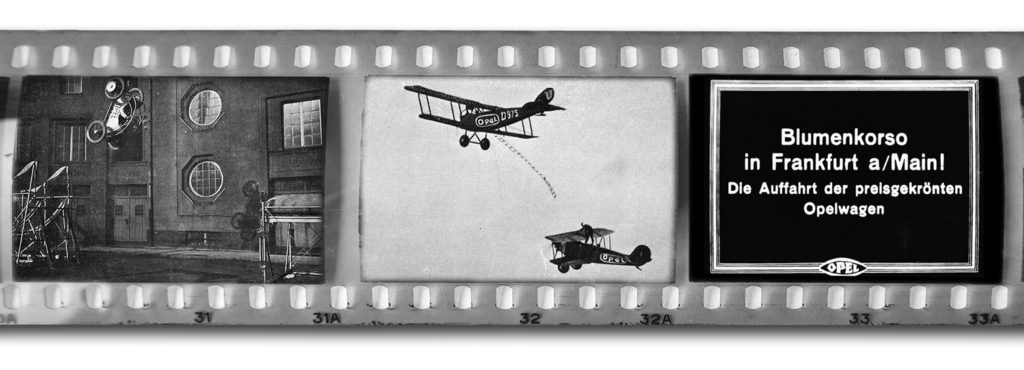
During the Weimar Republic, the film industry boomed, cinemas popped up like mushrooms and millions of people flocked to the cinemas. Not only to watch movies, but also to inform themselves about world affairs, social, cultural and sporting events in newsreels. From the mid-1920s onwards there was the “Opel Wochenschau” (Opel newsreel), a news compilation sponsored by the car manufacturer from Rüsselsheim. Individual excerpts of the “Opel Wochenschau” from 1926 and 1927 are archived in the Federal Archives in Koblenz. You can see short film sequences about the opening of the Zugspitze railway, the 300th anniversary celebrations of New York, but also “The ascent of the award-winning Opel cars” in a flower parade in Frankfurt or daredevil stunts with vehicles bearing the Opel logo. As was usual with newsreels at the time, the features are a silent sequence of films, with panels of information inserted in between. What seems unspectacular today was electrifying for viewers at the time. For the first time, they could participate in events from all over the world with their own eyes.

08 Beware of the shark!
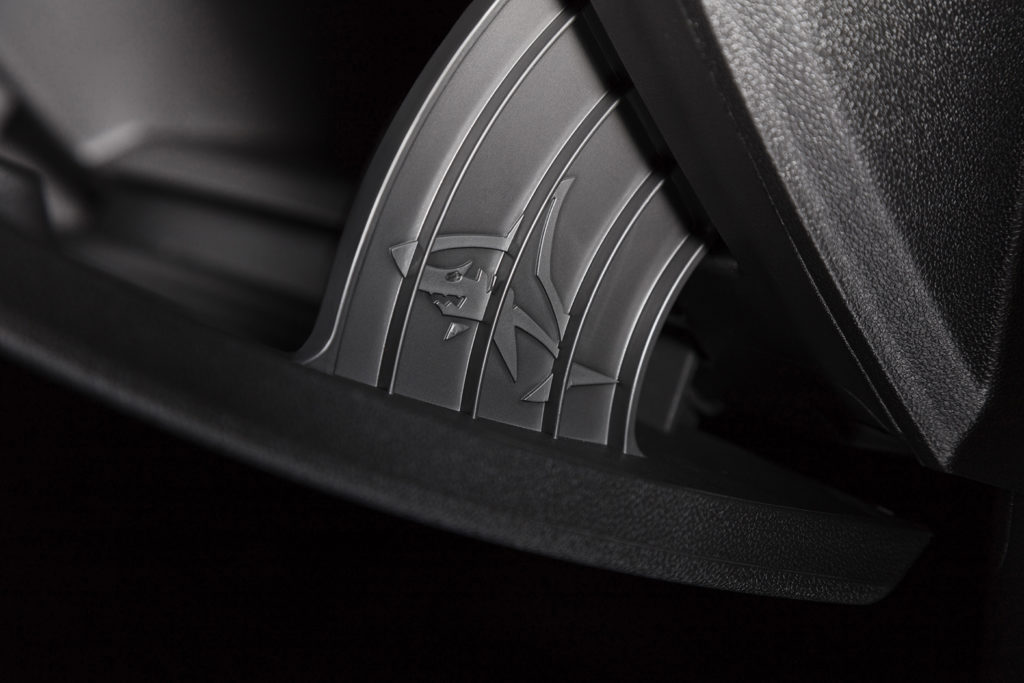
The hidden shark in Opel models has become a lovely tradition: in 2006, the animal appeared for the first time in the Corsa. How did it end up there? Opel designer Dietmar Finger drew a few designs of the glove compartment’s outer slats at home. His son looked over his shoulder and asked, “Dad, why don’t you just draw a shark?” So he drew a predatory fish, showed the design to his superiors and colleagues – and they were thrilled. From then on, the shark spread to all new Opel models. At the end of the development and design process, the head interior designer is allowed to place it in the interior – without revealing where. And so the idea has now become a popular “Easter Egg”: A hidden detail that delights customers when they take delivery of their new Opel and go looking for it.

09 The Olympic bobsleigh
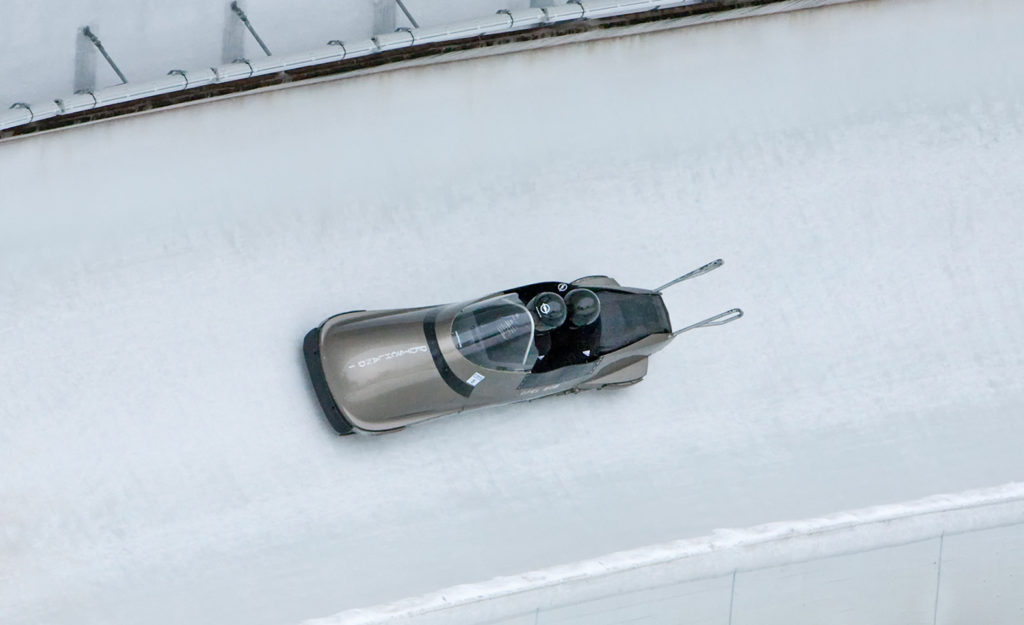
Under the project name “LP 13”, engineers from Rüsselsheim constructed a bobsleigh especially for the 1980 Winter Olympics in Lake Placid, USA. Curiously, however, it was not used there. The story begins as early as 1977: Opel designers were commissioned to provide the bobsleighs of the Deutschen Bob- und Schlittenverbandes (DBSV), the German Bobsleigh and Sledge Association, with special paintwork. The Rüsselsheim-based company came up with the idea of not just doing cosmetics, but of completely redesigning the sports equipment. The association agrees! Under Opel’s direction, an innovative shape is worked out in the wind tunnel and a completely new steering system is developed. In addition, the skids will be equipped with springs and damping. First tests show: The four-man and two-man bobsleighs are 0.65 and 1.35 seconds faster per run, respectively, than the previous models – in top-level sport these are worlds apart. But to ensure equal competition, the federation only allows athletes to compete in the old conventional bobsleighs in the qualification. And that means: the qualified teams first have to familiarise themselves with the futuristic Opel bobsleigh. But there is not enough time for that. Above all, the drivers cannot master the innovative steering perfectly in the short term. The risk is too high, the DBSV withdraws the Opel bobs. “These machines were well ahead of their time – actually too much so,” recalls bobsleigh legend André Lange. It is undisputed that the Opel bob has nevertheless had a lasting influence on the design of sports equipment right up to the present day.

10 The art of light construction
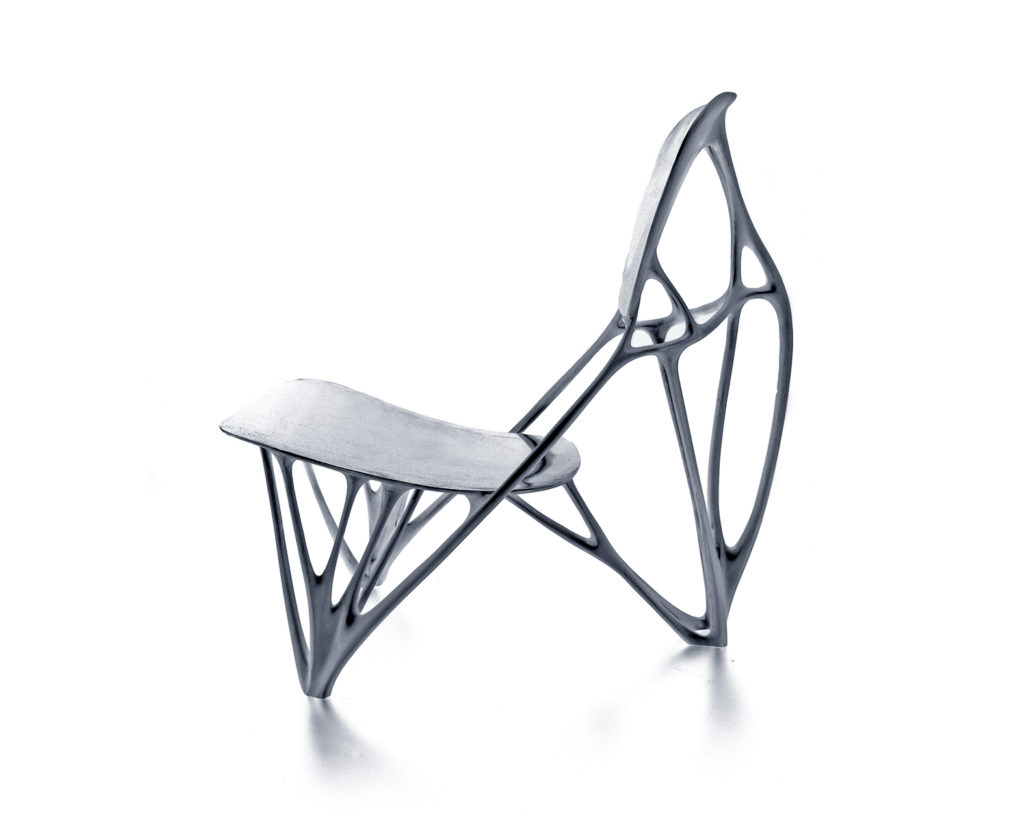
The Museum of Modern Art (MoMA) in New York is home to one of the world’s most important collections of contemporary art. And the “Bone Chair” has been part of this collection since 2008. It was designed by the Dutch artist Joris Laarman – based on data from the Rüsselsheim engineering center. The aluminium chair was presented in the special exhibition “Design and the Elastic Mind” together with an engine holder from an Opel Vectra. Like the “Bone Chair”, the motor holder was designed according to biological construction principles. Bionics is the name of the scientific discipline that systematically analyses construction and growth principles from nature and applies them to technical developments in the automobile industry. The goal: to reduce the weight of components and at the same time increase their strength – a lightweight design modelled on nature. Engineers from Rüsselsheim have developed a simulation programme that transfers the natural growth rules of trees, for example, to component developments. The result: components such as the engine holder are a quarter lighter and at the same time 60 percent stronger.

11 With Opel power into Formula 1
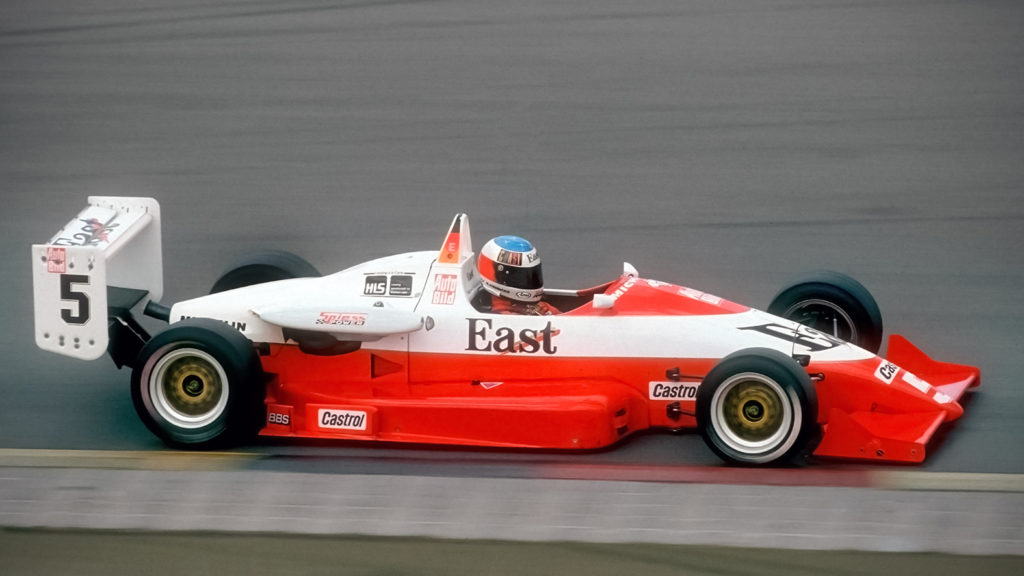
The photo shows Michael Schumacher in 1990 on his way to his first title in the German Formula 3 Championship. In the rear of his Reynard 903: the legendary Opel two-litre 16V engine. Opel was not only a sought-after engine supplier in Formula 3 from 1990 onwards – the 2.0-16V power unit from Rüsselsheim advanced to become the most successful racing engine ever. Many later Formula 1 stars learned the refinements of Formula 1 racing with Opel power behind them: Rubens Barrichello, David Coulthard, Giancarlo Fisichella, Heinz-Harald Frentzen, Mika Häkkinen, Nick Heidfeld and Ralf Schumacher. Opel took 164 Formula 3 victories in Germany alone and a further 30 national championship titles around the globe. Jos Verstappen (1993), Jarno Trulli (1996) and Nick Heidfeld (1997) won German Formula 3 championships with Opel engines.

12 Useful appendages

It was once advertised as a “Leichtmetaller” (light metal), the practical Opel car trailer made of aluminium for business, small transport, leisure and holidays. In the accompanying brochure from 1981, six versions were offered in four sizes each, making a proud 24 variants. The largest version was 2.20 metres long and had a payload of one tonne. Unfortunately, the single-axle trucks did not bear a Blitz emblem, for example on the tailboard. If they did, the few remaining examples would certainly be highly sought-after collector’s items. In 1913, Opel already had a trailer in its range. However, this was a two-tonne two-axle trailer with drawbar, which was intended for trucks.

November 2022
